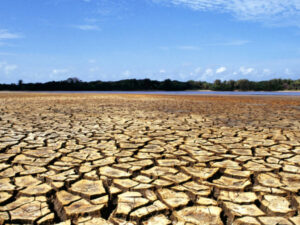They have released the results of their 2025 Climate and Catastrophe Insight report, which identifies global natural disasters and climate trends to quantify the risk and impact of extreme weather events.
The report reveals that in 2024, global natural disasters caused USD 368 billion in economic losses (in 2023 it was USD 397 billion), driven by hurricanes and severe convective storms (SCS) in the United States. The figure represents a 14% increase above the 21st-century average and the ninth consecutive year of losses exceeding USD 300 billion.
The Climate and Catastrophe Insight report points out:
-
Weather events are becoming more frequent and costly. Global insurance losses in 2024 were 54% above the 21st-century average, covering USD 145 billion of the USD 368 billion in damages (in 2023 it was USD 126 billion).
Even when insured losses far exceeded the average, the protection gap remained at 60% (in 2023 it was 68%), representing a significant financial obstacle for communities, businesses, and governments.
The increasing population, wealth, and overall exposure to natural hazards in high-risk areas remain a crucial component in the rise of disaster losses.
-
Hurricane Helene was the most costly global event in 2024. The hurricane made landfall in the U.S. in September, causing damages worth USD 75 billion and 243 deaths. Hurricane Milton in October was the costliest globally insured loss event, causing losses worth USD 20 billion. These are the main contributors to the fact that 78% of global insured losses were recorded in the U.S.
-
The steady growth of losses from SCS (severe convective storms) reflects the increase in population, exposure, and wealth. There were at least 54 global events, each resulting in economic losses exceeding a billion dollars in 2024, which is above the average of 44. The increase in the number of billion-dollar events is largely due to SCS in the U.S., increasing the likelihood of billion-dollar disasters, particularly as the United States continues to experience spatial growth of cities in areas regularly affected by SCS activity, such as Dallas, Houston, or Denver.
In terms of climate, 2024 was the warmest year on record. Twenty countries and territories recorded their highest temperatures during a year that ended with August setting 15 consecutive months of record high global temperatures.
-
The Aon report also shows that with greater resilience and mitigation measures, global economies can reduce damages and loss of lives. In 2024, 18,100 people lost their lives due to natural disasters, mainly from heatwaves and floods worldwide. This was below the 21st-century average of 72,400 and could be attributed to better warning systems, weather forecasts, and evacuation planning, highlighting the value of reliable data, insights, and climate analysis.
 Extreme Drought[/caption>
Extreme Drought[/caption>
The top 10 events for global natural disasters were as follows:
-
Hurricane Helene, affecting the United States, Mexico, and Cuba
-
Hurricane Milton, in the United States and Mexico
-
Noto Earthquake, in Japan
-
Floods in Valencia, Spain
-
Floods in southern and central China
-
Typhoon Yagi, in China and Southeast Asia
-
Hurricane Beryl, in the United States, Canada, and the Caribbean
-
Floods in central Europe
-
Droughts in the United States
-
Severe Convective Storms in the United States
Source: AON
Have you visited our YouTube channel? Subscribe now!

